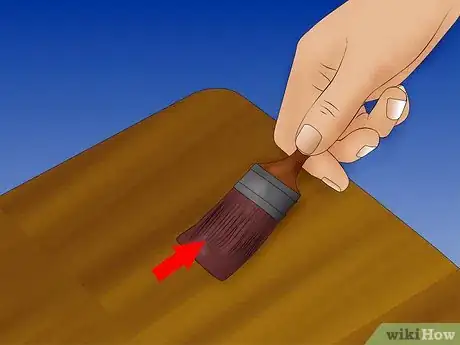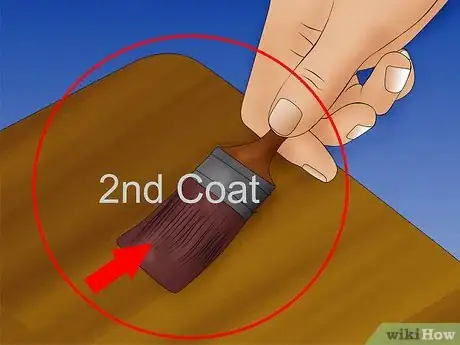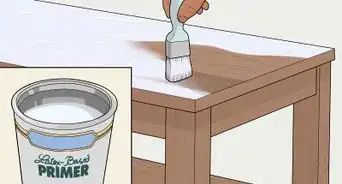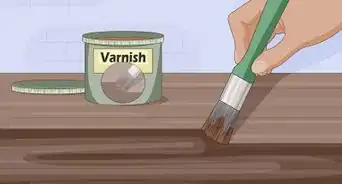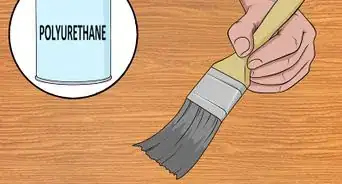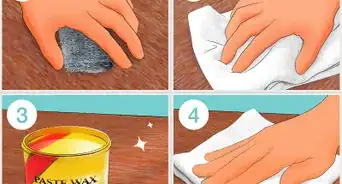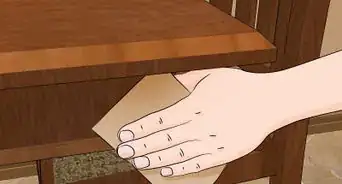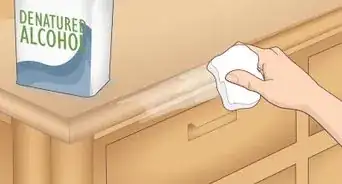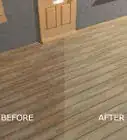wikiHow is a “wiki,” similar to Wikipedia, which means that many of our articles are co-written by multiple authors. To create this article, 9 people, some anonymous, worked to edit and improve it over time.
wikiHow marks an article as reader-approved once it receives enough positive feedback. In this case, 91% of readers who voted found the article helpful, earning it our reader-approved status.
This article has been viewed 137,942 times.
Learn more...
Shellac is a wood finishing product made by dissolving dried resin in denatured alcohol. Shellac was used heavily for finishing furniture during the 19th and early 20th centuries, and it is still available for use today. The product is popular due to its ease of application, low odor, and all-natural origin. Shellac is non-toxic, and has even been approved by the United States Food and Drug Administration for use as a glaze for candies.[1] Learning how to apply shellac will allow you to finish and seal wood projects using an easy, all-natural method.
Steps
-
1Prepare the area for finishing by sanding it smooth. Use a coarse-grit sandpaper to go over the entire piece. If there is an old finish applied to the wood, make sure to sand it away completely.[2] After sanding, wipe the piece down with a clean cloth to remove any dust and dirt.
-
2Pour some of the shellac into a separate bucket. Avoid dipping your brush directly into the shellac can, as this can contaminate the product with wood dust and other particles. Instead, load your brush from a separate bucket.Advertisement
-
3Select an appropriate brush for your project. Shellac can either be applied with a natural-bristled brush (china bristle is ideal) or a synthetic-bristled brush. Note that it can be difficult to clean the shellac from a natural-bristled brush without damaging the bristles. Do not use a foam brush to apply shellac, as the shellac tends to dry into the brush too quickly and hardens it.
-
4Load the brush with shellac. Dip the brush into the bucket of shellac and press it gently against the side of the bucket to remove the excess.
-
5Apply the shellac to the wood. Shellac should be applied in long, smooth strokes, following the grain of the wood to ensure an even application. Shellac dries very quickly, so it is important to work quickly and efficiently.[3]
- If you miss a spot when applying the shellac, avoid going back to touch it up. Because shellac dries very quickly, the partially dried shellac that is already applied will not blend smoothly into the fresh application. The missed spot will become less noticeable as more coats are applied.
-
6Allow the shellac to dry before sanding the finish. Let the first coat dry completely, which can take as little as 30 minutes in a well-ventilated area. Once it is dry, sand the entire finish lightly with a fine-grit sandpaper to prepare it for the next coat of shellac.[4]
-
7Apply the second coat of shellac. Apply the next coat just as you did the first, being careful to work along the grain. When the second coat is dry, you can sand the finish again and apply another coat, or simply leave the wood with 2 coats.[5]
-
8Clean your brush. Shellac can be cleaned from brushes with a mixture of ammonia and water. Mix equal parts ammonia and water, and then soak the brush bristles in the mixture. Rinse the brush and allow it to dry before storing.[6]
Community Q&A
-
QuestionHow long does it take for shellac crystals to dissolve in denatured alcohol?
 Robert WolfCommunity Answer1-2 hours. My method includes grinding the shellac flakes into a fine powder with a coffee grinder. This allows more of the flake's surface area to come into contact with the alcohol at once and dissolve quicker. Room Temperatures of 75 F-90 F will speed up this process.
Robert WolfCommunity Answer1-2 hours. My method includes grinding the shellac flakes into a fine powder with a coffee grinder. This allows more of the flake's surface area to come into contact with the alcohol at once and dissolve quicker. Room Temperatures of 75 F-90 F will speed up this process. -
QuestionCan I mix brick wax with shellac?
 Community AnswerYou should not mix shellac and wax as it will not harden completely. After the shellac has cured completely, a coat of wax protectant can be applied.
Community AnswerYou should not mix shellac and wax as it will not harden completely. After the shellac has cured completely, a coat of wax protectant can be applied. -
QuestionWhat color does shellac turn when dry?
 Community AnswerShellac normally dries clear. However, some shellacs will dry with an amber, brown, or red tint. It should be specified on the container what tint the shellac will dry.
Community AnswerShellac normally dries clear. However, some shellacs will dry with an amber, brown, or red tint. It should be specified on the container what tint the shellac will dry.
Things You'll Need
- Sandpaper
- Clean cloth
- Shellac
- Bucket
- Brush
- Bowl
- Ammonia
- Water
References
- ↑ https://www.naturalhandyman.com/iip/infpai/shellac.html
- ↑ https://www.bobvila.com/articles/sanding-wood/
- ↑ https://www.naturalhandyman.com/iip/infpai/shellac2.html
- ↑ https://www.popularwoodworking.com/article/a-silky-smooth-shellac-finish/
- ↑ https://www.bobvila.com/articles/how-to-shellac-wood/
- ↑ https://www.familyhandyman.com/tools/painting-tools/how-to-clean-paint-brushes/




